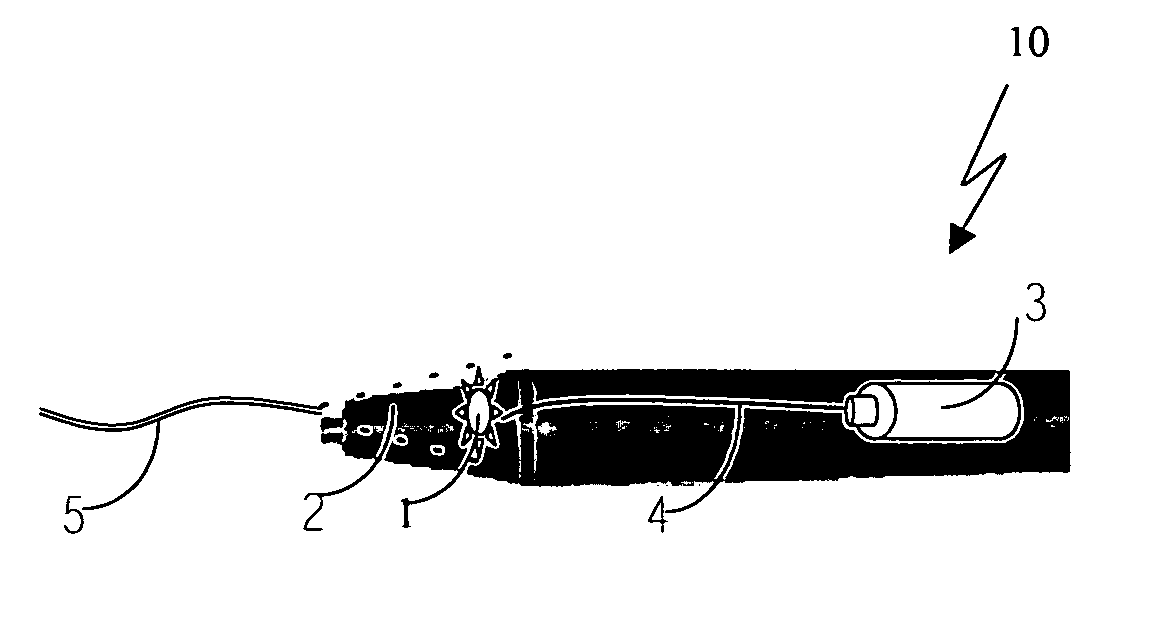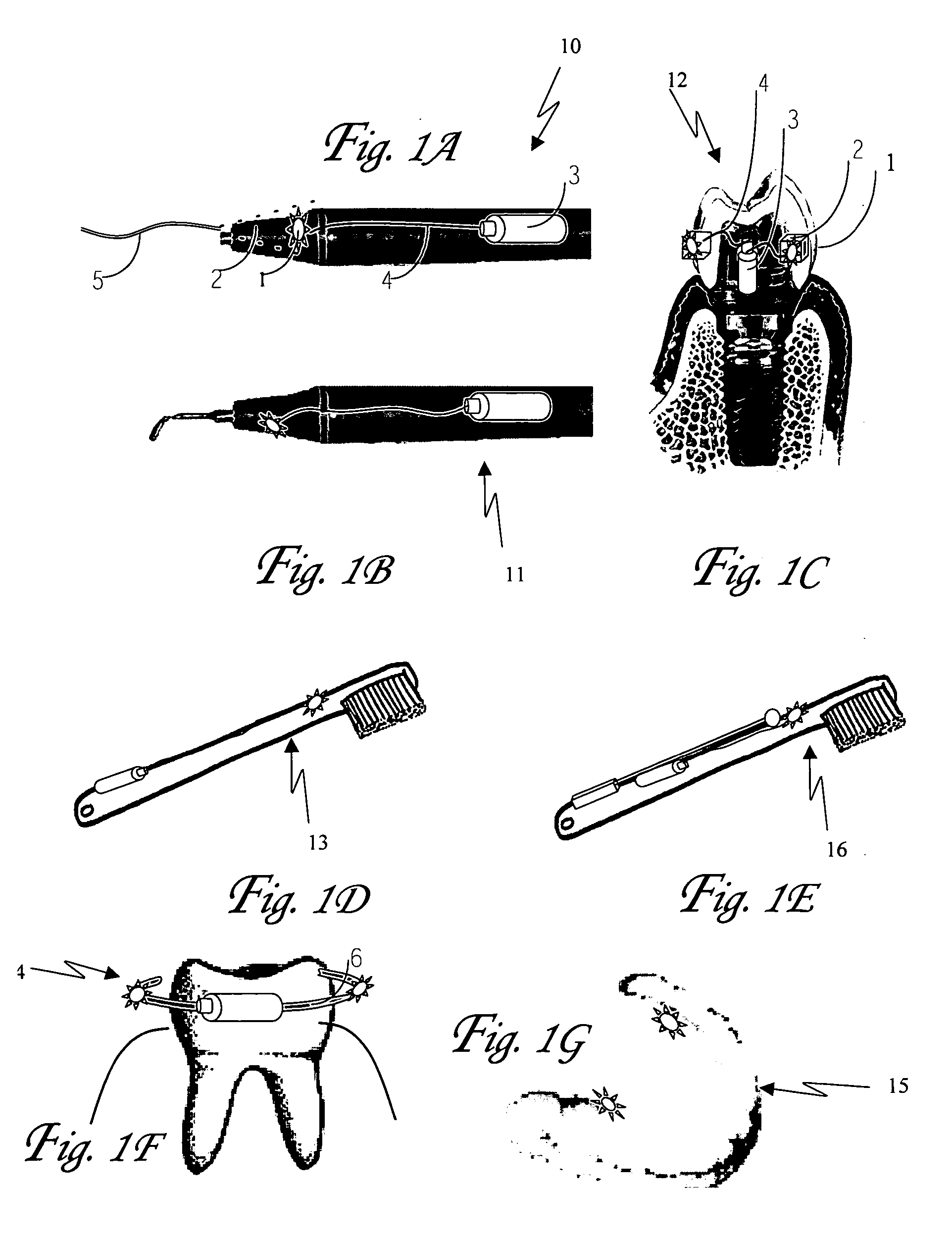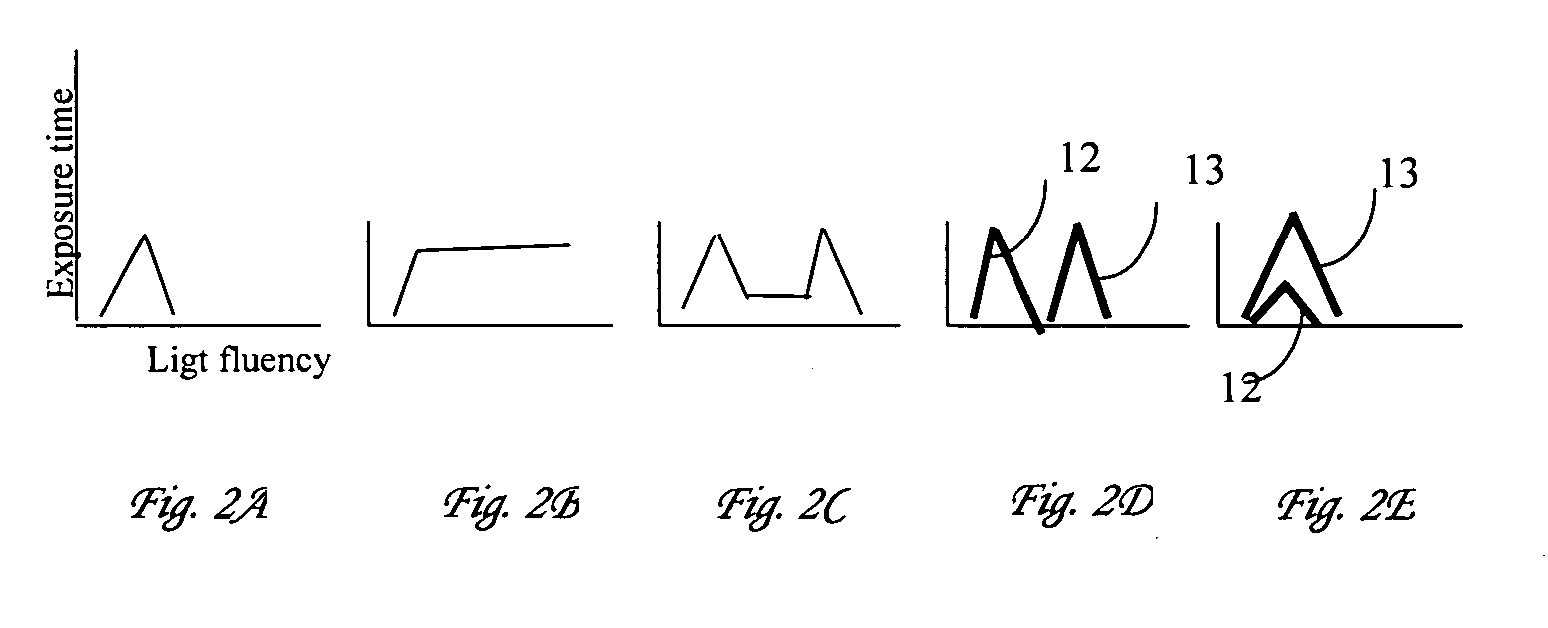Method and means for exerting a phototoxic effect of visible light on microorganisms
a technology of visible light and microorganisms, which is applied in the direction of boring tools, brushing, radiation therapy, etc., can solve the problems of reducing the susceptibility to this kind of treatment, compromising the effectiveness of the treatment, and killing bacteria by a photochemical mechanism, so as to prevent periodontitis
- Summary
- Abstract
- Description
- Claims
- Application Information
AI Technical Summary
Benefits of technology
Problems solved by technology
Method used
Image
Examples
Embodiment Construction
[0019] The following description is provided, alongside all chapters of the present invention, so as to enable any person skilled in the art to make use of said invention and sets forth the best modes contemplated by the inventor of carrying out this invention. Various modifications, however, will remain apparent to those skilled in the art, since the generic principles of the present invention have been defined specifically to provide a method and means for exerting a selective phototoxic effect, and to discloses an effective means for inhibit predetermined bacterial lawn (such as Fusobacterium nucleatum and Porphyromonas gingivalis) from growing into biofilm such that periodontitis is prevented. Hence, the present invention provided a selective method for treating microbial diseases in local infections comprising the step of emitting a beam of a violet-blue light towards the tissue to be treated. This violet-blue beam is having a wavelength from about 400 to about 550 nanometers a...
PUM
| Property | Measurement | Unit |
|---|---|---|
| wavelength | aaaaa | aaaaa |
| wavelength | aaaaa | aaaaa |
| temperature | aaaaa | aaaaa |
Abstract
Description
Claims
Application Information
 Login to View More
Login to View More - R&D
- Intellectual Property
- Life Sciences
- Materials
- Tech Scout
- Unparalleled Data Quality
- Higher Quality Content
- 60% Fewer Hallucinations
Browse by: Latest US Patents, China's latest patents, Technical Efficacy Thesaurus, Application Domain, Technology Topic, Popular Technical Reports.
© 2025 PatSnap. All rights reserved.Legal|Privacy policy|Modern Slavery Act Transparency Statement|Sitemap|About US| Contact US: help@patsnap.com



